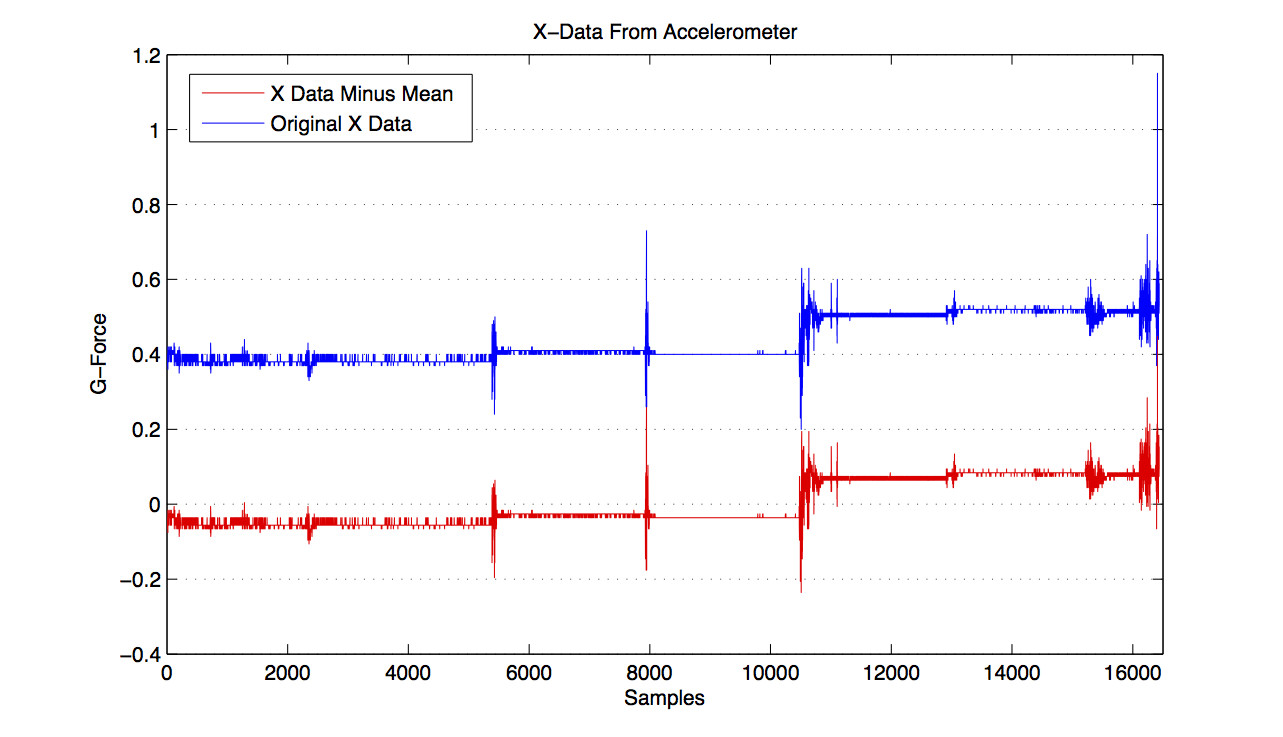I have accelerometer [x,y,z] data recorded from various activities. I am not looking at any filtering techniques (which I have seen within this forum) because I want to be able to measure the amplitude of the noise for each activity sample set using a global time-domain feature average loudness.
I am curious to know if I can center the signal around 0g, similarly to the X Data Minus Mean vector plot, but without the x-axis orientation i.e. the signal shifting up and down?
I have the x-axis data from one of my activities below:
I was hoping that by subtracting the mean from the x-axis data would yield this, but all it has done is shifted the entire signal down to around 0g.
The reason I ask is because I am unsure if computing a time-domain feature such as average loudness will work with the signal shifting up and down?


